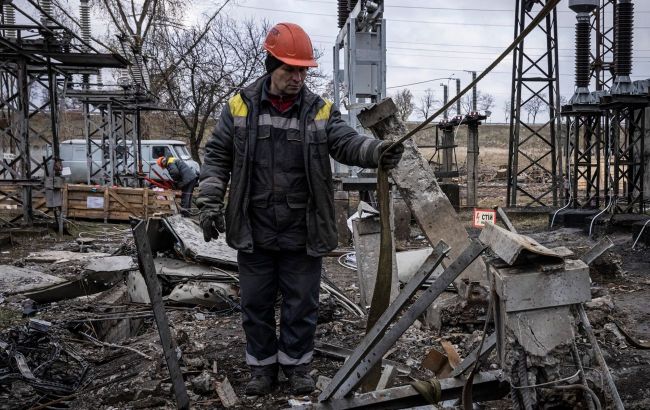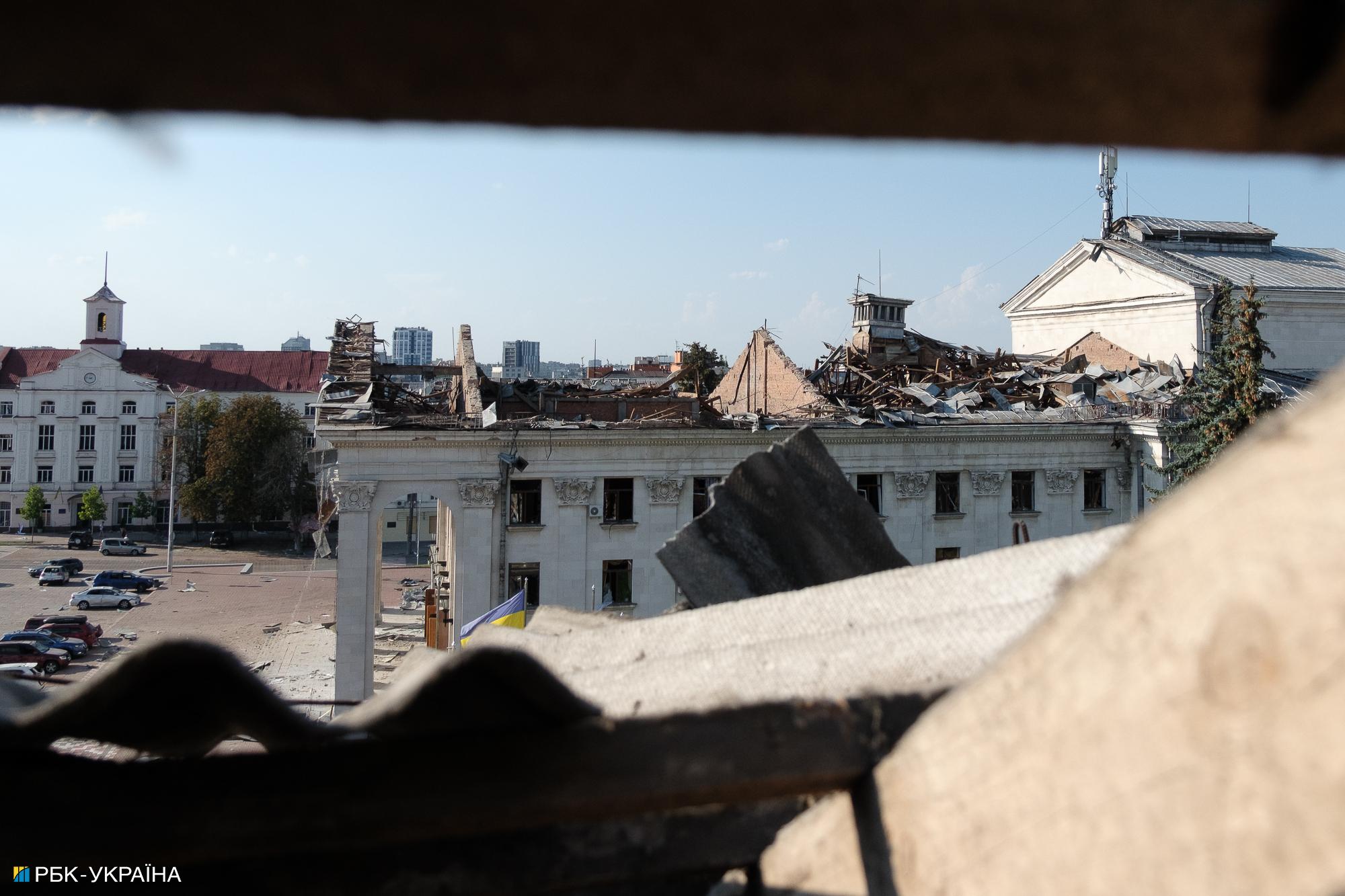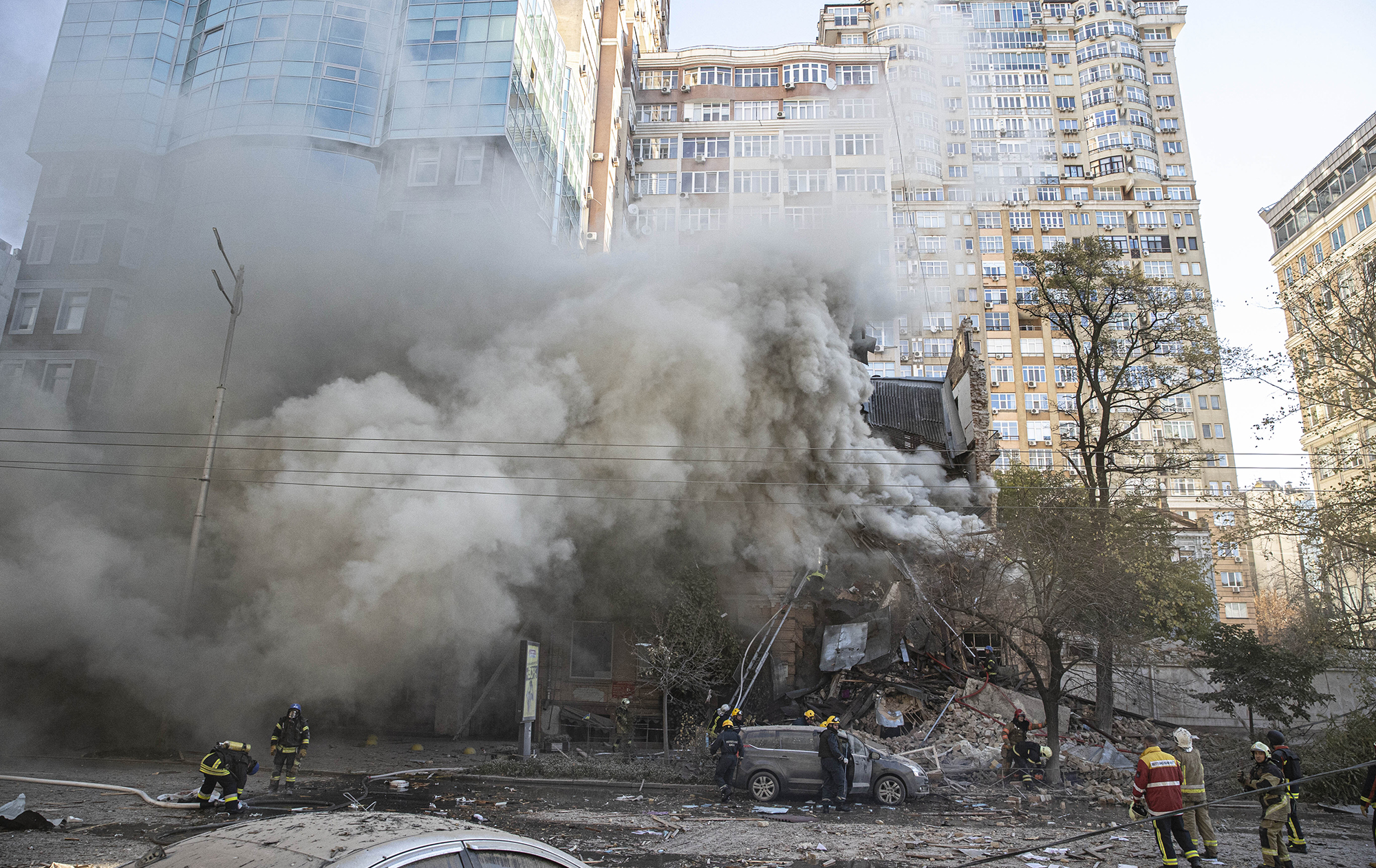Energy at risk: How can Russia attack Ukraine in the fall and how many missiles the enemy has
 Russia may try to destroy our energy infrastructure again with missiles and UAVs this fall (photo: GettyImages)
Russia may try to destroy our energy infrastructure again with missiles and UAVs this fall (photo: GettyImages)
In the fall, Russia may resume shelling the energy sector. RBC-Ukraine analyzed whether the aggressor has the capability for massive attacks, and how many missiles and UAVs Russia manufactures.
Government representatives increasingly suspect that Russians will once again target the energy infrastructure this fall. The previous attempt to plunge Ukrainians into darkness and cold on a large scale failed. After the peak period of attacks in December of last year, the lights in our homes gradually increased despite continued shelling. Finally, in March, the Russians abandoned this idea – their arsenal of missiles was on the brink of exhaustion.
For two months, massive shelling ceased. However, in May, the enemy initiated a new aerial campaign, prioritizing the locations of military forces and equipment intended for the Ukrainian advance. In the first month, as calculated by RBC-Ukraine, Russians attacked Ukraine with 198 missiles. And from mid-July onwards, they systematically began to destroy port infrastructure.
It seems that the latest plan is not very effective and has little impact on the course of the military operations. Therefore, after failures on the front, the enemy may attempt to repeat last year's plan to suppress Ukrainian resistance.
Russian missile reserves and production
According to data provided by the representative of the Defense Intelligence of Ukraine Vadym Skibitskyi, Moscow currently possesses approximately 585 missiles with a range of over 500 kilometers, which are most frequently used to attack various regions of Ukraine. This includes around 270 Iskander ballistic and cruise missiles, about 75 Kinzhal missiles, roughly 140 Kalibr missiles, and approximately 100 Kh-101, Kh-555, and Kh-55 missiles with warheads. In addition, the aggressor may have an estimated 150 old Kh-22 missiles in reserves.
Despite the hopes of Ukrainians, Russia has been able to not only accumulate missiles since the beginning of spring but also increase their production. As of mid-summer this year, the enemy has managed to produce many times more missile weaponry than during the pre-war period. In August, the Russians planned to release a total of 118 Kinzhal, Iskander-M, Iskander-K, Kalibr, Kh-101 and modified Kh-22 (Kh-32) missiles.
"In addition to six Kinzhals, the Russians plan to produce 30 Iskander-M ballistic missiles, 12 Iskander-K cruise missiles, 20 Kalibr missiles, and about 40 Kh-101 missiles in August. Moreover, they are improving the Kh-22 cruise missiles; the modified versions have a new designation - Kh-32. According to our data, the Russians may deliver no more than 10 such upgraded missiles per month," Skibitskyi said. However, he noted that the actual production of some missile models lags behind their plans.
Nevertheless, the available production volumes do not allow the Russians to maintain the same intensity of attacks as in May, releasing 200 missiles for several months in a row. Sooner or later, their own arsenal will run out. Due to limited stocks and production of certain types of missiles, the enemy has had to adjust its tactics of shelling, Skibitskyi explains. This includes alternating between missiles of different classes, selecting targets more carefully, and meticulously determining flight routes for missiles and UAVs to circumvent our air defense system. Plus, the aggressor has started making decisions about strikes more quickly.

The results of the recent strike on Chernihiv (photo: RBC-Ukraine, Vitalii Nosach)
Skibitskyi explains that when the enemy receives information about the urgent need to strike a target, they use more accurate and faster missiles that are harder for our Air Defense to intercept – as it was on August 19 in Chernihiv. On that day, the aggressor struck the city center with an Iskander-K cruise missile, where a drone exhibition was taking place at the time.
"Iskander missile brigades are stationed along the entire border - in the Rostov, Kursk, and Belgorod regions, as well as in our occupied territories, including Crimea. Accordingly, our regions and areas closer to the front line and the Ukrainian-Russian border are under threat, as the flight time of these missiles to the target is a matter of minutes. Quickly reacting to their use is extremely difficult," Skibitskyi emphasized.
For the same reasons, since May, the aggressor has been using Kinzhal missiles more frequently – when they need to strike an important target suddenly or with a higher probability of hitting. However, practice shows that even if this "pride" of the Russian defense industry is not shot down during flight, it still does not guarantee precise hitting of the intended target.
Another characteristic feature of the summer attacks is the relatively less use of Kh-101. This is primarily due to economic considerations, according to Skibitskyi. Russians find it difficult to fulfill the plan for producing these missiles – 40 units per month – due to a shortage of foreign components, and their existing reserves are already quite small. The second reason is that the aggressor is trying to stockpile these missiles, as they are considered more accurate and effective compared to, for example, Kh-555, Kh-22, or even Kalibr missiles, which we successfully intercept.
In conclusion, all these trends in aggregate may indicate not only the enemy's effort to save missiles but also an attempt to accumulate them for the next aerial campaign, with our energy sector potentially being the target. The beginning of these attacks could fall at the end of September or October.
The enemy is preparing for fall
Evidence in favor of this version may be the fact that the Russians are already conducting reconnaissance of our energy facilities. According to the representative of the Defense Intelligence of Ukraine, the enemy is currently searching for their vulnerable points and the locations of air defense systems to determine optimal launch routes.
Something similar we saw during the attack on the night from Saturday to Sunday, August 27: the launch of several rockets that circled almost the entire country was likely intended to study future routes.
The Defense Intelligence assumes that the enemy's tactics and approach to shelling the energy sector will depend on how accurately they determine critical objects for us. This could be either 1-3 strikes aimed at one target to destroy it completely or a massive attack with various types of weaponry, including drones and missiles.

The consequences of one of the attacks by Shaheds on Kyiv in October 2022 (photo: GettyImages)
"However, such massive bombardments as we saw last October, November, and December when they launched 70-100 rockets simultaneously, most likely won't happen again. The Russians realize that they may not achieve their goal but instead will deplete their supplies, as it happened last year," Skibitskyi added.
Another probable scheme of bombardments could be a combined salvo - the launch of 10-30 different missiles plus a significantly larger number of Shaheds. One of the attacks organized by the enemy in August shows that this tactic unfortunately allows some enemy objects to bypass our air defense. Power stations - a critical element of the energy system - suffered the most from drones last season. Yurii Ihnat, a Spokesperson of the Air Forces Command of the Armed Forces of Ukraine, also believes that in the event of energy shelling, the enemy will focus on Shaheds.
"We are aware that the Russians are increasing the production of missiles. However, this is still not enough to maintain the same intensity of attacks as last autumn and winter - weekly, every 10-14 days, 70-100 rockets for five months. Therefore, in my opinion, in case of new shelling of energy infrastructure, the enemy will use attack drones more," Ihnat said in a comment.
The aggressor has already begun working on establishing a powerful production of such drones. In June, the White House announced that with Iran's help, Russia intends to build a Shahed production plant in Tatarstan, which is expected to start operating early next year. However, according to our military intelligence, Moscow is already using kamikaze drones against Ukraine, assembled in Russia.
"After the last Shahed attacks, we found elements in them indicating that the final stage of assembling these UAVs is already taking place in Russia. This is partly evidenced by the increase in the number of Russian components in the drones. Furthermore, we have the aggressor's plans, which include an increase in the production of Shaheds on the territory of the Russian Federation. At the same time, during one of the Russian exhibitions of weapons and military equipment, it was announced that Moscow wants to master the production of approximately 60 UAVs of various modifications by 2030," Skibitskyi revealed.
According to intelligence's preliminary data, the enemy plans to manufacture 1,300 so-called Geran-2, or Shaheds, in the second half of this year. They plan to use components from both foreign and domestic production for them. However, in reality, Russia cannot produce such a quantity of UAVs today, Skibitskyi noted. According to him, intelligence is currently gathering data on the actual capacity of the enemy's production, where they are assembling these drones, and which enterprises on the territory of the aggressor state are involved in supplying components.
In military intelligence, they say that the success of the enemy's plans will depend on the effectiveness of sanctions and the "kinetic impact" on the objects involved in the production of Shaheds in the Russian Federation.
***
Currently, there are discussions in expert circles about what this heating season will be like - harder, easier, or the same as last year. There is no definite answer yet.
 Kyiv during power outages last winter (photo: GettyImages)
Kyiv during power outages last winter (photo: GettyImages)
Our energy system was being restored in the fall and summer. However, probably due to the damage inflicted on it, it will still have less capacity at the beginning of the heating season than at the start of the previous one. On the other hand, our power engineers already have an unwanted but successful experience in doing incredible and repairing damage in extreme conditions.
Another important factor: it became known from Pentagon documents leakage about the gradual depletion of the anti-aircraft missiles for the S-300 and BUK-M1 - the main air defense systems that cover Ukrainian skies. However, they are being replaced with more modern Western systems, some of which are not disclosed publicly. The Commander of the Air Force, Mykola Oleshchuk, said that one NASAMS with 5-12 launchers can replace five S-300 anti-aircraft missile systems.
Western partners have also announced the transfer of a number of systems to Ukraine, which in terms of tactical and technical characteristics could be a good alternative to BUK systems (including IRIS-T SLS). Moreover, at the beginning of the year, information emerged that Ukraine plans (or has already started) to adapt these Soviet systems for use with foreign anti-aircraft missiles. In one way or another, our air defense will be more prepared for potential mass attacks.

